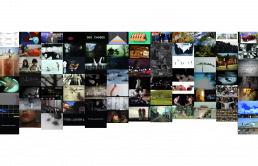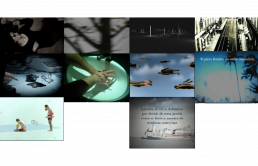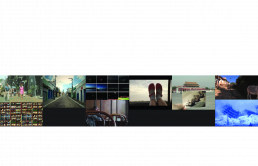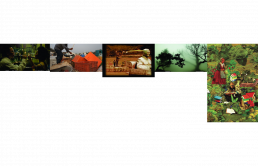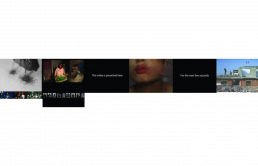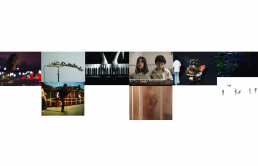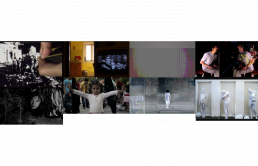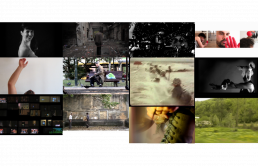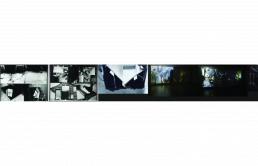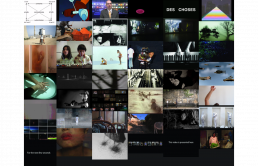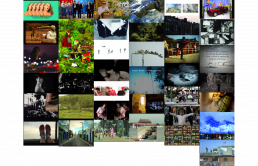“FUSO 2012 – 21 Agosto a 7 Setembro“
Programa
25 Agosto, 23h30
Museu Nacional de História Natural e da Ciência
Em cartaz: Medidas de Austeridade
Curadoria de João Laia
Este programa investiga a noção de austeridade como uma ferramenta criativa para a experimentação visual e análise social. Incorporando o que Hito Steyerl denomina como o Lumpemproletariado da imaginação visual e de byproducts da internet, os filmes apresentados neste programa criticam a visibilidade original da cultura mainstream de uma forma irónica que pode ser lida como uma paródia da estética de recessão de novas medidas de conservação, bem como uma crítica das políticas liberais anteriores que estimularam um consumismo num ritmo acelerado e que, em última instância, levou ao atual estado das coisas.
Em cartaz: Medidas de Austeridade apresenta um inventário de materiais pobres e técnicas marginais (por exemplo, imagens de arquivo de baixa resolução, ruído visual e sonoro, compressão, reformatação e gravações de webcams) usadas internacionalmente por artistas contemporâneos. As obras selecionadas são exemplos de novas linguagens e texturas fílmicas que refletem e se servem dos contextos imagéticos e sociais contemporâneos, construindo uma resposta artística contra a comercialização e a institucionalização das artes digitais e da internet. Estas imagens que Steyerl identifica como pertencendo a um processo de perda da sua substância visual e que revelam questões políticas sub-reptícias podem, então, estar relacionadas também com o atual período de recessão e, da mesma forma, a sua omnipresença poderá estar ligada à perfusão da austeridade internacional.
Em cartaz: Medidas de Austeridade apresenta filmes cuja estética é normalmente encontrada na internet e que têm aparecido sobre o contexto da arte contemporânea, mas cuja presença é ainda rara em telas de cinema. Nesse sentido, este programa questiona também a experiência do público, apresentando filmes cujas formas visuais e conteúdos narrativos são geralmente experimentados, ou rejeitados, em contextos privados, onde o espectador pode controlar mais facilmente a sua reprodução e receção. A perda de poder decorrente desse novo contexto na experiência do espectador ressalta as especificidades da sala de cinema, ao mesmo tempo em que estimula um exame minucioso das imagens que, segundo Steyerl, poderiam circular no contexto privado sem jamais serem pensadas.
Idealmente, este programa teria uma duração reduzida de 50 minutos, destacando e subvertendo o curto período de atenção do utilizador da internet e citando com humor discursos de recessão relacionados com cortes orçamentais. O título é também uma forma irónica e humorística de engajamento com o atual contexto de austeridade.
Daniel Lopatin (Oneohtrix Point Never), Replica, 2011, EUA, 4’35’’
Vídeo para a música Replica.
James Corbett, The Meaning of “Austerity”, 2010, EUA, 5’ (extrato)
Vídeo do Youtube.
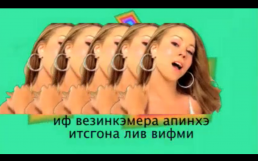
Ilya Korobkov, Touch my Body, Rússia, 2009, 4’
Touch My Body faz parte da série de obras dedicadas à música de Mariah Carey feitas pelos alunos da escola de arte multimédia Rodchenko. Korobkov explora a técnica copy/paste, removendo o corpo da cantora a partir do vídeo original e colocando-o num ambiente kitsch e abstrato. Korobkov inclui traços dessa operação simples no trabalho, que ganha um carácter pouco cuidado e cru. Esta metodologia sublinha o lado pouco profissional do trabalho como forma de oposição à estética MTV.

Takeshi Murata, Infinite Doors, 2010, EUA, 2’
Infinite Doors baseia-se no poder e estímulo incessantes de uma cultura focada em concursos televisivos. Utilizando clips de The Price is Right (O Preço Certo), Murata edita uma série de revelações de prémios. Os incessantes aplausos da audiência e um locutor excessivamente animado tornam o trabalho simultaneamente cómico e peculiar. A superficialidade dos prémios e a sobrecarga de estímulos visuais tornam-se absurdas no seu excesso e começam a sufocar a própria emoção que se destinam a induzir.
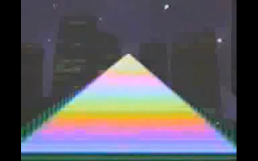
Daniel Lopatin (Oneohtrix Point Never), Nobody Here, 2009, EUA, 3’
Nobody Here (Youtube, 2009) foi lançado como parte de um DVD de edição reduzida na editora de música Root Strata San Francisco nesse ano. No entanto, o vídeo obteve mais atenção no Youtube, servindo como uma espécie de entrada filosófica no catálogo OPN (Oneohtrix Point Never). Em Nobody Here, Lopatin loopa uma frase emprestada do sucesso hiper-sentimental dos anos 80 Lady In Red, de Chris De Burgh e reimagina-o como um mantra. A performance vocal de De Burgh entra em queda livre, tornando-se uma voz vinda do abismo da memória, escutada como se fosse transmitida através do tempo, tendo as décadas despojando-a de contexto cultural, significado e definição. O que resta é uma conceção de nostalgia como algo flexível, vago e com poderes transformadores.
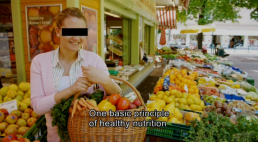
Jean-Gabriel Périot, #67, 2012, França, 3’30’’
Filme merdoso sobre política.
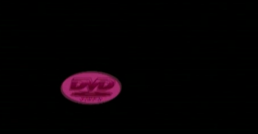
James Richards, The Misty Suite, 2009, Reino Unido, 6’50’’
Richards usa a acumulação e reorganização visuais como processos elegíacos e devocionais; os arquétipos da mixtape e do souvenir criam e demonstram a obsessão do fã, a transformação do arquivo público para um formato pessoal. Richards propõe uma arena de subjetividade diferente daquela delimitada no interior da circulação comercial e mediática, e, assim, redefine processos de produção e exibição.
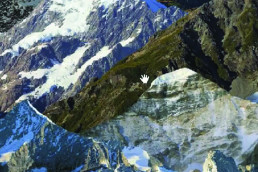
Jesse McLean, Climbing, 2011, EUA, 6’18’’
Climbing é uma homenagem ao Romantismo Alemão utilizando o trompe l’oeil máximo. A escalada infinita do cursor heróico é, simultaneamente, um olhar crítico e uma celebração dissimulada da natureza ilimitada da paisagem digital.
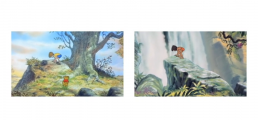
Olivier Laric, Versions, 2009, Reino Unido, 6’30’’
O documentário sugere uma nova direção para a produção de imagens, que Laric considera atingir o seu auge, na era internet, em bootlegs, cópias e remixes, novas formas culturais que progressivamente prevalecem sobre os respetivos ‘originais’. Sublinhando essa pluralidade, Laric apresenta quatro ‘versões’ equivalentes do filme. Em cada versão, o mesmo ciclo de imagens é recriado por um narrador diferente – Momus, Guthrie Lonergan, Dani Admiss e o próprio Laric.
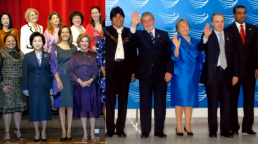
Jean-Gabriel Périot, The Barbarians, 2010, França, 5’
Nós somos escumalha! Nós somos bárbaros!

Chooc Ly Tan, New Materials in the Reading of the World, 2011, França, 5’
O vídeo anuncia o aparecimento de Oubliismo, um conceito que consiste na exploração das novas possibilidades encontradas no caos do universo. Em New Materials in the Reading of the World, a narração e outros sons fundem-se com imagens, tendo como base a sua divergência. O resultado é uma composição cacofónica e poética, feita a partir de materiais audiovisuais reapropriados e produzidos para o efeito. O Oubliismo propõe o repensar do sistema atual, que está vinculado a leis físicas e preocupações humanas. Este movimento distancia-se da realidade e aspira a novos ideais cósmicos e revolucionários.
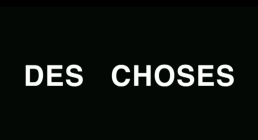
Jean-Luc Godard, Film Socialisme Trailer #4, 2010, Suiça, 1’15’’
Tailer #4 de Film Socialisme.
“FUSO 2012 – August 21 to September 7“
Program
August 25, 11:30pm
Museu Nacional de História Natural e da Ciência
Now showing: Austerity Measures
Curatorship by João Laia
This programme investigates the notion of austerity as a creative tool for visual experimentation and social analysis. Incorporating what Hito Steyerl names as lumpen proletarian visual imaginary and internet byproducts, the films presented in this programme criticize the pristine visuality of mainstream culture in a tongue-in-cheek manner that can be read as a parody of the recessional aesthetics of the new conservative measures as well as a critique of the previous liberal policies that stimulated a high-paced consumerism and that ultimately led to the present state of affairs.
Now showing: Austerity Measures presents an inventory of poor materials and marginal techniques (e.g. low-res found footage, visual and sonic noise, compression, reformatting, and web camera recordings) used internationally by contemporary artists. These works are examples of new filmic languages and textures that use and reflect contemporary visual imaginary and social contexts becoming an artistic response against the commercialisation and institutionalisation of digital arts and the internet. These images that Steyerl identifies as being in the process of losing its visual substance and that uncover hidden political subtexts may then be also related to the current period of recession and likewise their ubiquity could be linked to the pervasiveness of the international austerity.
Now Showing: Austerity Measures presents films whose aesthetics are ordinarily found on the internet and have been appearing in contemporary art contexts but are still rare on cinema screens. In that sense it also questions the experience of the public by presenting films whose visual forms and narrative contents are usually experienced, or rejected, in private contexts, where the viewer can more easily control their reproduction and reception. The loss of power arising from this new context of spectatorship underlines the specificities of the cinema room while stimulating a scrutiny of the images that according to Steyerl could circulate in the private context without ever being thought about.
Ideally this programme would have a reduced duration of 50 minutes, pointing out and subverting the short attention span of the internet user and humorously quoting recession discourses related to budget cuts. The title is also a somewhat ironic and humorous form of engagement with the current context of austerity.
Daniel Lopatin (Oneohtrix Point Never), Replica, 2011, USA, 4’35’’
Official music video for Replica.
James Corbett, The Meaning of “Austerity”, 2010, USA, 5’ (extraCT)
Youtube video.

Ilya Korobkov, Touch my Body, Russia, 2009, 4’
Touch my body is a part of a work series made by the students of Rodchenko School of Multimedia Art, dedicated to the homonymous pop song by Mariah Carey. Korobkov explores the copy-paste technique, by removing the singer’s own body from the original video, transposing it into a kitschy abstract environment. The artist reveals traces of this simplistic operation, which becomes raw and less careful. By doing this Korobkov highlights the cheap and unprofessional character of the work as oppose to the seamless aesthetics of MTV culture.

Takeshi Murata, Infinite Doors, 2010, USA, 2’
Infinite Doors draws on the determined staying power and unremitting stimulation of prize-oriented game show culture. Using clips from The Price is Right, Murata edits a kinetic series of prize unveils. Unrelenting audience applause and an excessively animated announcer make the clip at once comical and peculiar. The superfluity of reward and overload of visual cues become absurd in their excess and begin to smother the very excitement they are meant to induce.

Daniel Lopatin (Oneohtrix Point Never), Nobody Here, 2009, USA, 3’
Nobody Here (Youtube, 2009) was released as part of a short run DVD on San Francisco’s Root Strata record label the same year. However, the video gathered the most traction on Youtube, serving as a sort of philosophical entry point into the OPN (Oneohtrix Point Never) catalogue. On Nobody Here, Lopatin loops a phrase lifted from Chris De Burgh’s schmaltzy 1980s hit Lady In Red and re-imagines it as a mantra, with De Burgh’s vocal set in constant freefall, a voice from the abyss of memory, heard as if it was broadcast over time, the decades stripping it of definition, meaning and cultural context. What you are left with is a view of nostalgia as innately flexible, vague and containing transformative powers.

Jean-Gabriel Périot, #67, 2012, FranCE, 3’30’’
Crappy video about politics.

James Richards, The Misty Suite, 2009, United Kingdom, 6’50’’
Richards uses the accumulation and reassembly of imagery as a devotional and elegiac process; the archetypes of the mixtape and of the souvenir create and demonstrate the obsession of the fan, the transformation of the mass archive into a personal one. He proposes an arena of subjectivity distinct from the one bounded by commerce and the media, and so redefining processes of making and showing.

Jesse McLean, Climbing, 2011, USA, 6’18’’
Climbing is an homage to German Romanticism using the ultimate trompe l’oeil. The endless ascent of the heroic cursor is both a critical look and a sly celebration of the infinite nature of the digital landscape.

Oliver Laric, Versions, 2009, United Kingdom, 6’30’’
The documentary suggests a new mandate for image making, one which Laric identifies as finding its zenith in our networked internet age where bootlegs, copies and remixes increasingly take precedent over ‘originals’ in cultural production. Emphasising this plurality, Laric presents four equivalent ‘versions’ of the film in total. In each version, the same cycle of images is re-authored by a different narrator – respectively Momus, Guthrie Lonergan, Dani Admiss and Laric himself.

Jean-Gabriel Périot, The Barbarians, 2010, France, 5’
We are scum! We are barbarians!

Chooc Ly Tan, New Materials in the Reading of the World, 2011, France, 5’
The video announces the emergence of Oubliism, a concept that consists of the exploration of new possibilities to be found in the chaos of the universe. In New Materials in the Reading of the World, spoken word and other sounds merge with imagery, on the basis of their divergence. The result is an atonal and poetic composition, with created and found audio visual materials. Oubliism proposes a rethink of the current system which is bound by physical laws and humane concerns. This movement distances itself from reality and aspires to new cosmic and revolutionary ideals.

Jean-Luc Godard, Film Socialisme Trailer #4, 2010, Switzerland, 1’15’’
Tailer #4 of Film Socialisme.


